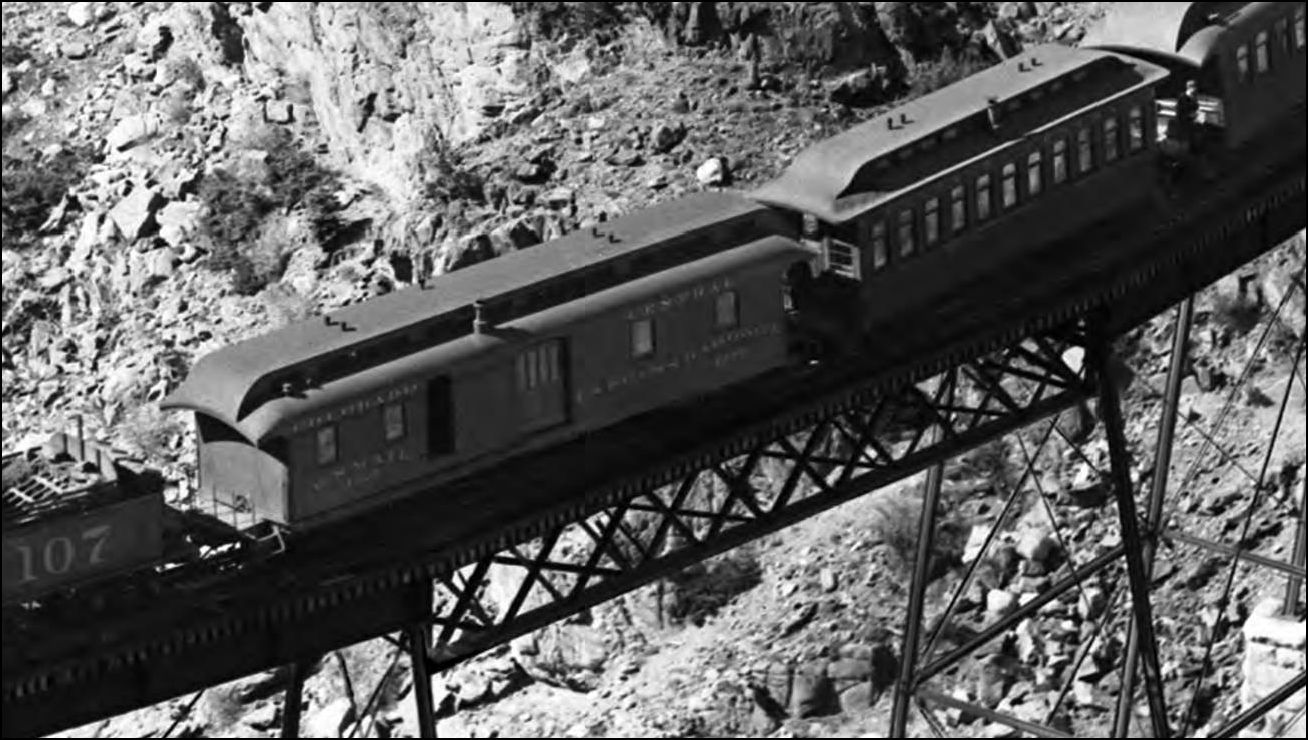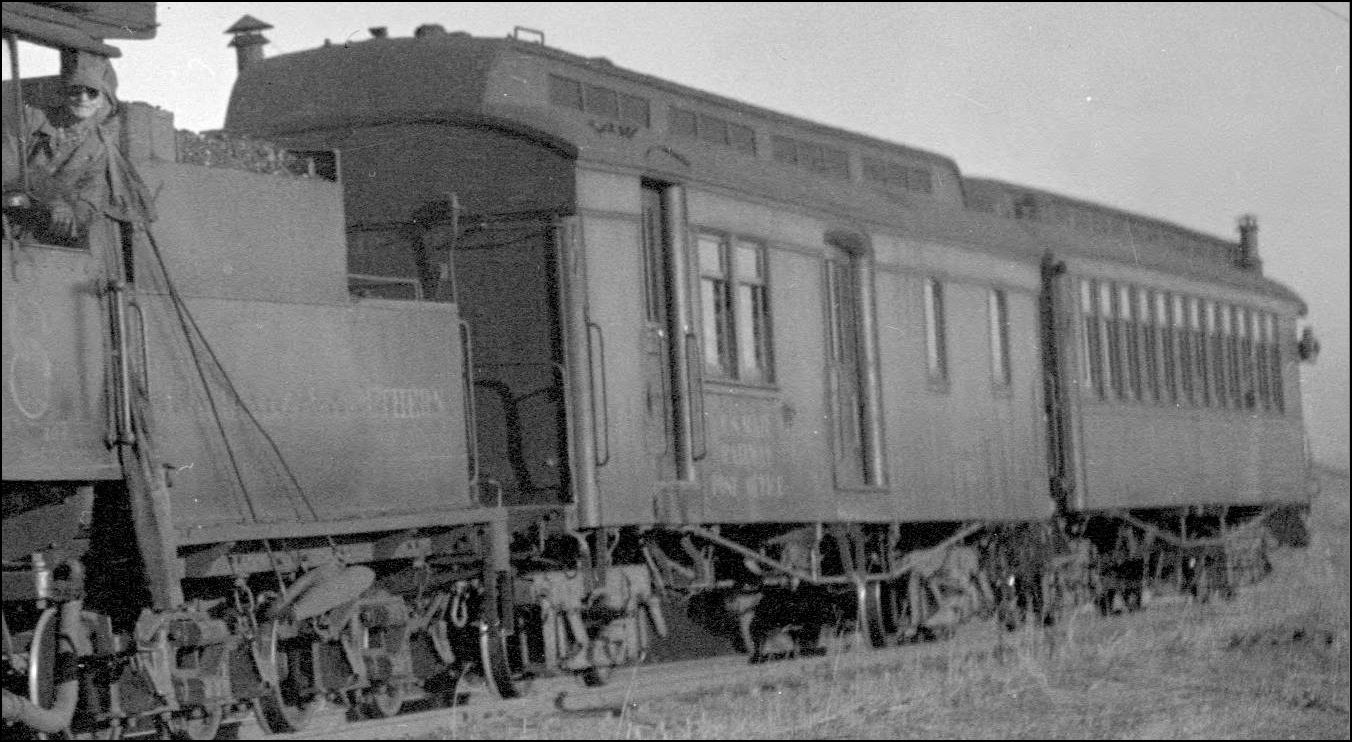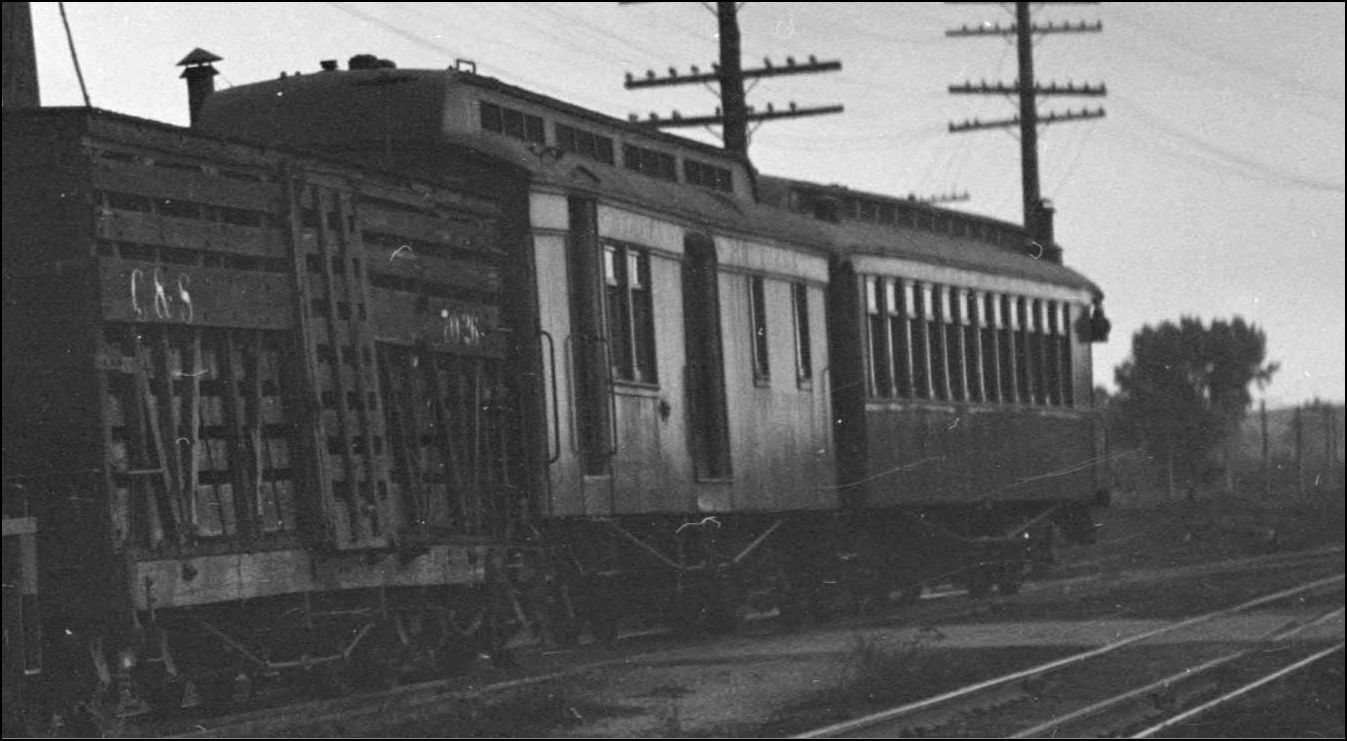Which Way is Most Common?
12



12
|
Thanks Chris, for the photo back up. I believe this is because of the short tail on the Leadville wye.
This is fine for me, as I only have a turntable in Leadville.
Keith Hayes
Leadville in Sn3 |
|
In reply to this post by Chris Walker
OK, so what was the question?
|
|
Which way should the RPO face.....
I was under the impression the blind-end faces the Locomotive, but that this was a response to accidents involving RPO damages due to fires, derailments and telescoping, and possibly brought upon the Railroads by the Post Office. Ahh, Keith, if the RPO was facing the opposite direction leaving Denver on the Last Train and was still that way returning, then the whole train must have been turned at Leadville. I haven't had the time tonight to go through anymore of the DPL's pics and I'm just not that familiar with the length of the Leadville Wye so I'll let you fill me in on this and why (ouch) you seem to think otherwise. If anyone wishes to further this, search DPL for C&S Narrow Gauge Train refine search within results with #70 , search again with #71
UpSideDownC
in New Zealand |
|
Administrator
|
I wondered about this too, Chris, while I was building my #13. My first thought was that as Keith speculated, it was because of the short tail on the Leadville Wye. And that may well be the answer. But it seems pretty clear that there was no effort made to turn the car at Denver to place the Mail end at the head end which was part of the USPS mail contract, and why the Mail and Baggage cars were required to be rebuilt the way they were. So there had to have been some sort of exemption to the contract, and to do that, the reason probably was because of the hardship of turning the car in Leadville.
The simplest answer is that it was just easier to switch the cars around without turning the mail car. But it obviously was done occasionally anyway because pictures show the mail car oriented both ways over the years, so it was just random, and appears to have been about 50-50. We always tend to look for complicated reasons to answer simple questions, even though the randomness of this may be just that and all there was to it. But I have come to think that the C&S took advantage of the Postal contract exemption and oriented Car #13 sometimes backwards and sometimes forward to ease stress on the old and aging wood frame of the car to extend the time before it had to be completely rebuilt. Car #13 was an old DSP&P car and was older than the UP built cars #10,#11, and #12, but was apparently, with rare exception, the only Baggage and Mail Car used on trains #70/#71 after the C&S went to their "Three times a Week" schedule in 1931. There are pictures that show a definite sag in the body and roof of #13 after 1931, so it had to have spent some time in the Car Shop for some pretty heavy repair work to have been done, but it couldn't have been out of service for too long, so it probably was never totally rebuilt from the 1912 Postal modifications before abandonment. So it had 25 years of heavy service by 1937, and the newer UP cars were pretty well shot at 20 years. When the old wood coaches on the D&RGW Silverton Branch were rebuilt with steel frames at the Burnham shops in the 1970's, two of the last ones were the old Jackson & Sharpe #319 and the former Parlor Car "Alamosa". Those cars were placed at the end of their trainset and the Carmen had to open the doors and windows first thing every morning to air them out. The crews were amazed in the last year before they were rebuilt that the coupler draft gears didn't pull out of the frames every day. Fortunately as modelers, we don't have to worry about the why of things like this, and can rest in comfort that no matter how we orient our mail cars, we are OK. But we can speculate the reason to the end of time. Rick Steele didn't think my weak frame idea was too likely, but he did agree that Car #13 was probably the only Mail Car used in regular service after 1931. So it had to be the best of an aging group of cars even though it was oldest. The C&S was a crafty railroad, and they knew how to economize to get the last day out of all of their equipment. Coaches could be regularly reoriented by flipping the seats, so you don't pay much attention to that, but the mail car is completely obvious when it was turned. That's my story and I'm sticking to it, as they say.... |
|
This post was updated on .
In reply to this post by Chris Walker
Is the mail end always on the Leadville end of the train?
I have not checked out my model, but I recall that both ends of the car are blind. While I like the center door cars, they require scratchbuilding in Sn3. The door with the 1/4 round moulding will take some work. Not to mention the roof. And the signature large brake wheel. And there are other projects in the interim. Perhaps a combination car? I was surprised as I studied the photos that the car appears to have been rarely turned. It would be much easier to switch the order of cars at each end. No doubt this can be ascribed to multiple economies, though I don't personally see how running the car one way versus the other would result in less drawbar wear. In contrast, the Grande appears to have turned their mail cars at each end of the run, though I can't speak for the same day out and back trains. The long mail cars were rebuilt with steel rail on the ends and covered in (bitumen?) fire retardant. They also got cast steel trucks as did 13. Not sure if 10-11-12 got the trucks. I don't think D&RGW 62-63 got the upgrades either, though they were in use to the end of the Chili Line.
Keith Hayes
Leadville in Sn3 |
|
What do folks do for modelling #13 in HOn3? Kit-bash a La Belle or MRGS D&RGW car, or just start from scratch? (Or is there another supplier I don’t know about?)
Thanks, Jeff. |
Re: Which Way is Most Common?
|
In reply to this post by Keith Hayes
I believe that Post Office regulations dictated which end faced the engine.The RPO sections of the 10-11-12 cars were rebuilt to conform to them.Regarding Hon3 Passenger Cars there is a new company producing some C&S cars.Don't know the name but they were recently mentioned in Bogies & the Loop.They might have a 13.
|
|
Heartland Railway? (So far they just have coaches 58 and 60.)
Jeff.
|
Re: Which Way is Most Common?
|
That sounds like the company.
|
|
Administrator
|
In reply to this post by Keith Hayes
Keith the Mail end of the car has a blind end. The baggage end has a door. The mail end also has the narrower side doors and the paired windows.
Typically the mail end ran at the head end with the baggage end to the rear. But that rule was not applicable for whatever reason on the C&S. Jeff, I used material from a Crossing Gate D&RGW RPO kit to build my #13. |
|
Leadville. 22nd Feb 1934. Thank You Otto.
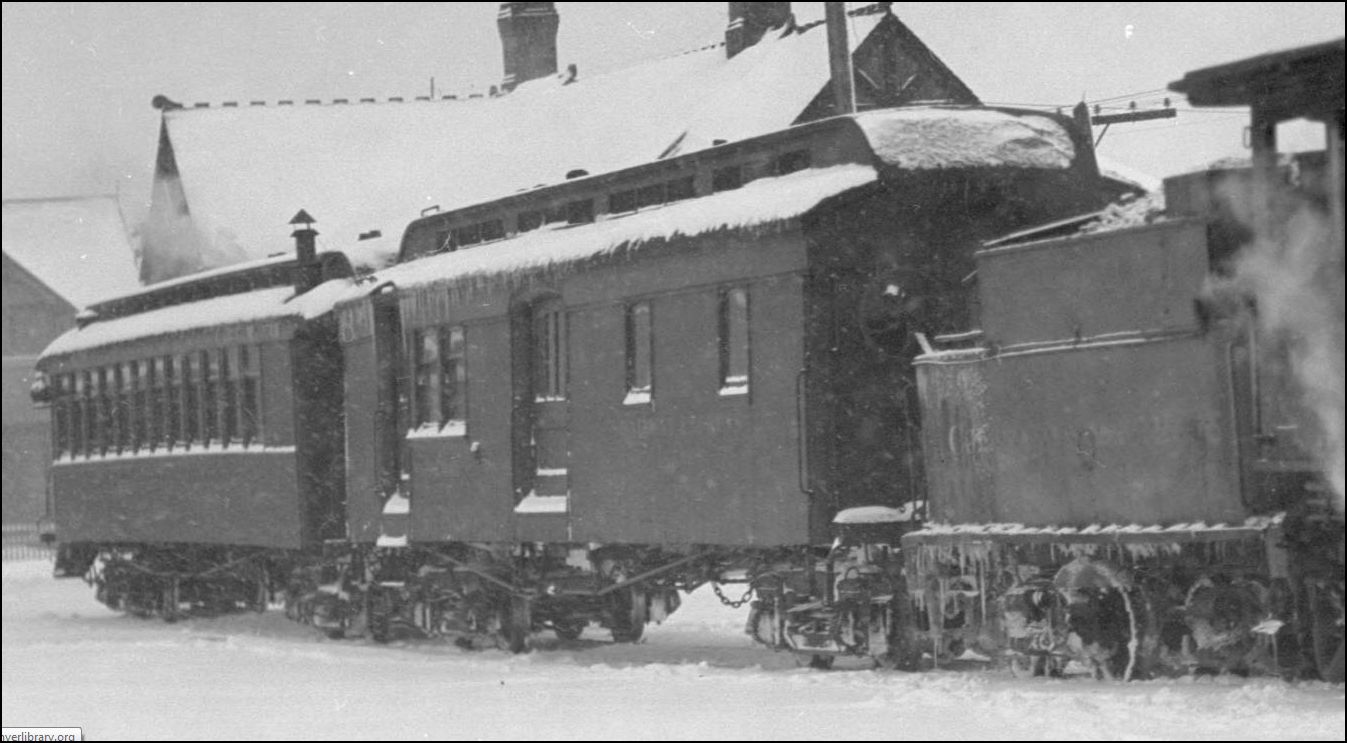 http://digital.denverlibrary.org/cdm/fullbrowser/collection/p15330coll22/id/42475/rv/singleitem/rec/2 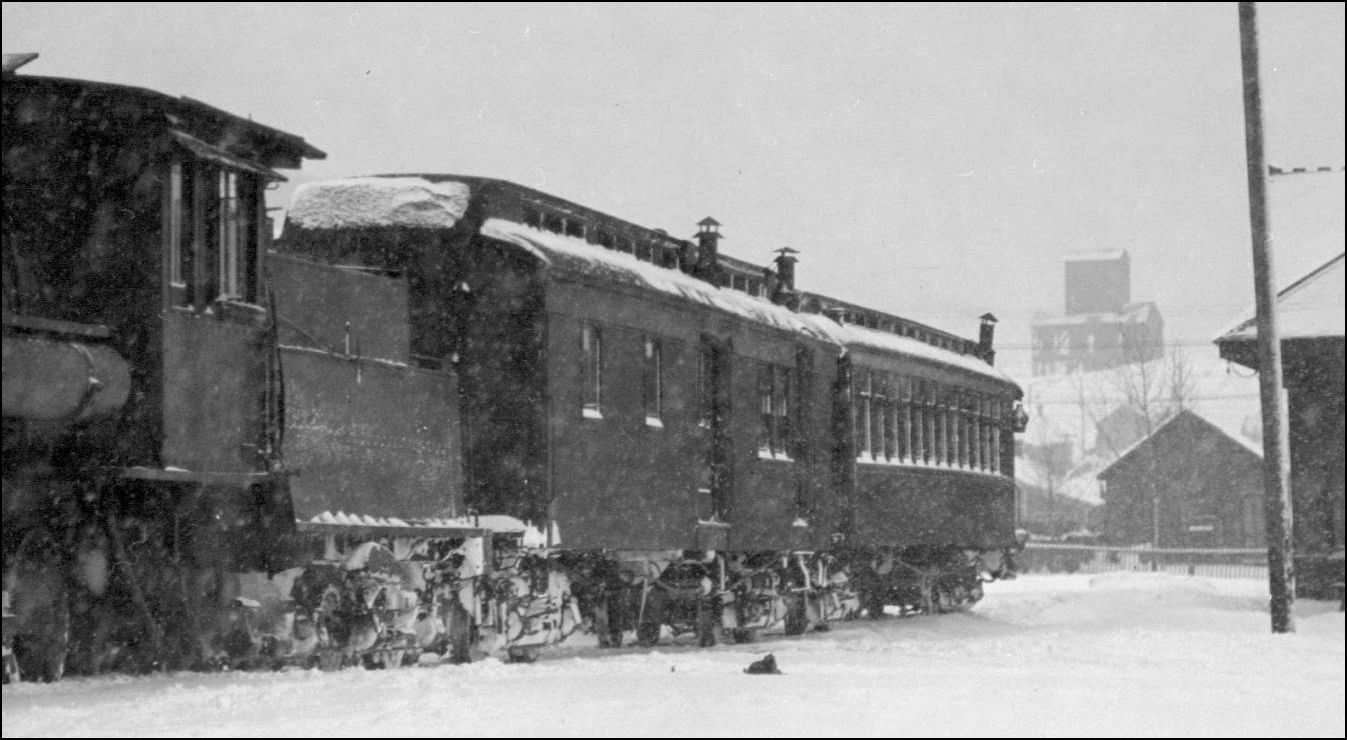 http://digital.denverlibrary.org/cdm/fullbrowser/collection/p15330coll22/id/42477/rv/singleitem/rec/3
UpSideDownC
in New Zealand |
|
Administrator
|
Wow, thanks, Chris!
Proves two things and helps with a third. First, proves that the mail car was not turned at Leadville, they left the baggage end "westward" that day, assuming the date is actually the same. Second, proves that as I suggested, #13 was at least occasionally not used after 1931. Only one of the UP cars could have been substituted. Third, this may help identify when #13 was out of service to repair it's sagging roof, which was repaired after 1931. Can anyone make out which of the UP cars this is? Great work, Chris. Thanks. I'd be pretty surprised if you can find many more of those UP cars in the consist, but I've been wrong plenty of times before. |
|
I think it could be 12. Here is a pic I just took, trying to create the same angle.

|
|
Of course my model may not be entirely correct.
|
|
Thank you, Chris. were 10-11-12 built as mail cars, or as baggage? I wonder why the windows. The baggage car would make a great project, too.
Keith Hayes
Leadville in Sn3 |
Re: Which Way is Most Common?
|
Check out Hayes Hendricks' DSP&P/CC/C&S website which can be accessed through the Railway Engineering website.They were built as RPO cars.Hendricks' website can tell you anything you want to know about these cars.
|
|
Administrator
|
In reply to this post by Keith Hayes
Keith, the windows in the mail end, and in the earlier versions of the baggage ends, for daylight. In the mail end, sorting bags were hung on racks under the windows on both sides.
One day, or more likely, one six months, I'd like to build a model of the early version of the UP cars for use with my old No. 7. Thanks for the pics, Chris, and for the tip on additional information, Robert. They are truly unique, especially as built, with platforms and those deep roof overhangs. |
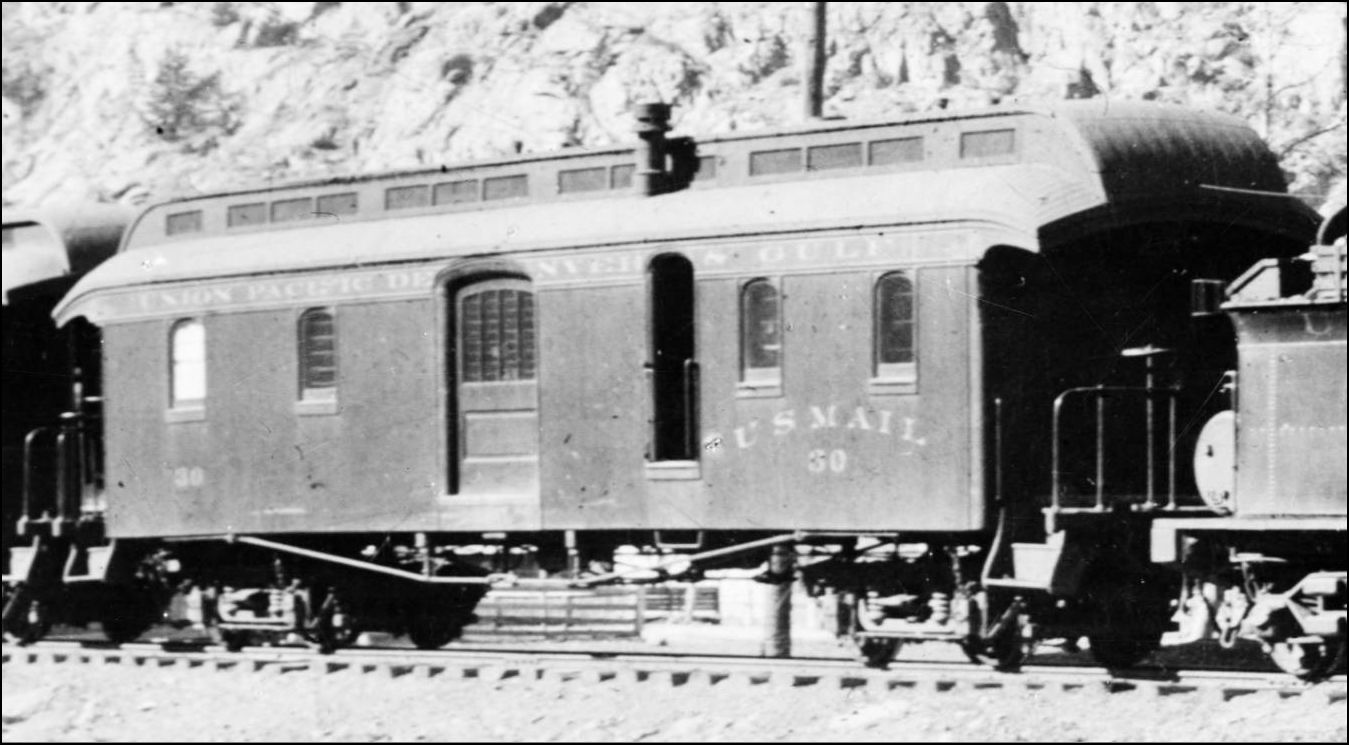 http://digital.denverlibrary.org/cdm/fullbrowser/collection/p15330coll22/id/30887/rv/singleitem/rec/1
UpSideDownC
in New Zealand |
«
Return to C&Sng Discussion Forum
|
1 view|%1 views
| Free forum by Nabble | Edit this page |












